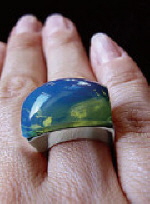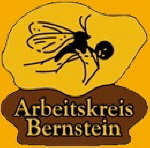InColor
Fall/Winter 2009
(published by the International Colored Gem Association ICA www.gemstone.org)
Written by Alec Corday and Hermann Dittrich
When Christopher Columbus stepped onto the sands of the island of Hispaniola in the “New World,” amber was already a well-known commodity in Europe, having been used since Neolithic times.
During his voyage, Columbus wrote in one of his letters that he even gave an amber necklace to one of the Taino tribal chiefs on Hispaniola as a gift. The Admiral also recorded the find of large pieces of amber on the island itself, including “one mass of which weighed three hundred pounds.” Although this encouraged him to believe that there were more treasures to be found on Hispaniola [1], he and his fellow Conquistadors had their sights set on gold instead of amber, and they wouldn’t let a few naked natives stand in their way.



InColor Fall/Winter 2009
reading test
PDF-Dokument [835,8 KB]
Download


 Print
Print